Nestled against the Tsengwen River (曾文溪) in rural Tainan, the Tainan Shan-Shang Garden and Old Waterworks Museum (台南山上花園水道博物館) includes the site of Japanese-era waterworks and surrounding land, newly restored and transformed into a tourist destination with broad appeal.
Visually appealing, educational and full of space for children to run around, the museum has something for all ages and interests, making it an ideal destination for couples, families, solo travelers, the Instagram crowd and anyone in between.
After assuming control of Taiwan in 1895, the Japanese government began civil engineering projects that included sanitation and tap water systems, which most of Taiwan was lacking at the time. This reality is reflected in the Taiwanese Hokkien words for tap water and tap, which were calqued directly from the Japanese word for waterworks and do not match the Mandarin.

Photo: Tyler Cottenie
Construction on the Tainan Waterworks began in 1912 and was finally completed in 1922. No longer in operation but still mostly intact, the facility has been opened to the public as part of a larger complex that includes a number of other features and amenities.
THE GARDEN GROUNDS
After entering the museum grounds through the main gate (NT$100 admission), visitors first encounter an expansive open garden, with the red-brick waterworks buildings creating a visual contrast in the background. In the middle of this garden is a circular path known as the “Miyanomori Circle,” a reference to the Miyanomori Golf Course that used to occupy the land next to the waterworks.

Photo: Tyler Cottenie
The golf course, whose name translates to “Royal Woods,” was named in honor of the visit of a Japanese prince to the grounds in 1933. Nowadays, the golf course is gone but much of the land remains open and grassy.
Next to the garden is a forested area that served as a seedling nursery after the waterworks ceased operations, and now serves as an ideal place for visitors to escape the heat and admire a variety of unusual trees. Scattered throughout the open garden and forested areas are numerous art exhibits, as well as a pool and sandbox for children to play in.
This pool is named after Yoichi Hatta, the Japanese engineer most renowned for designing the Chianan Irrigation Canal (嘉南大圳), but who also worked at the Tainan Waterworks for a time.

Photo: Tyler Cottenie
Other features on the grounds are named after other important waterworks engineering figures. The path separating the garden and forest is named after William Burton, a British sanitation engineer whose career with the Japanese government included important improvements to sanitation systems in Taiwan.
At the far end of this path, right in the center of the museum grounds, is a statue of Hamano Yashiro, the Chief Architect of the Tainan Waterworks, and waterworks in five other Taiwanese cities. The original statue was taken away and melted for its bronze during World War II, but a new one was commissioned by Chi-Mei Corp founder Hsu Wen-Lung (許文龍) and is now on display in the same location as the original.
THE WATERWORKS
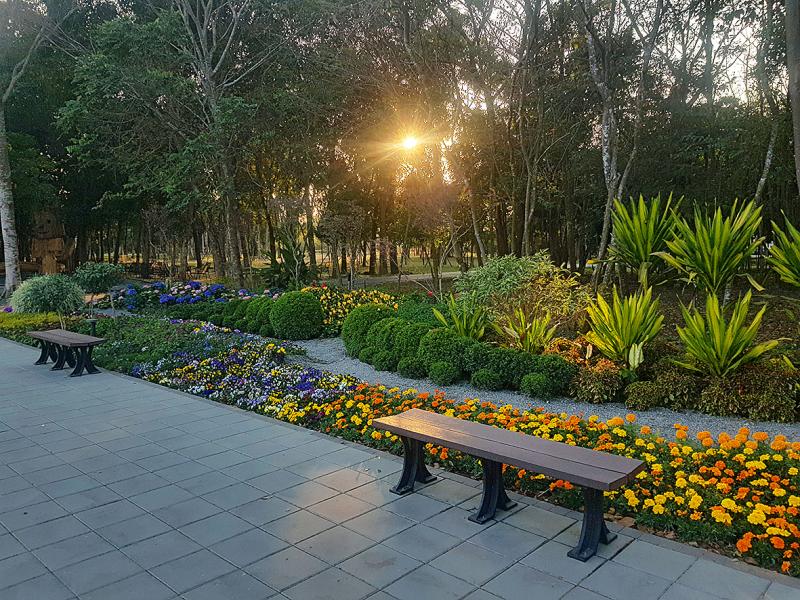
Photo: Tyler Cottenie
Behind this statue, at the rear of the complex, is the site of the old Tainan Waterworks proper. The architecture of the largest building is impressive both inside and out. It is especially picturesque in the late afternoon, when its red-brick exterior glows under the golden sunlight filtering through the line of majestic old trees running the length of the building.
The interior features a high ceiling framed with Taiwanese cypress beams. As securing beams long enough to span the entire room would have been difficult, two shorter beams on either side were joined by a metal cable in the middle, a twist on the common queen truss design. This also makes for a more open space and, with the added symmetry of the rows of filtration tanks on either side of the room, is another favorite with the Instagram crowd.
Water from the Tsengwen River arriving at the waterworks entered this building first. After chemical treatment, the water would then enter one of the British-made rapid filtration tanks. Inside these, water passed through imported Italian sand (during the Japanese era, but cheaper sand from Penghu’s Chipei Islet after they left) before moving on to the adjacent pump building.
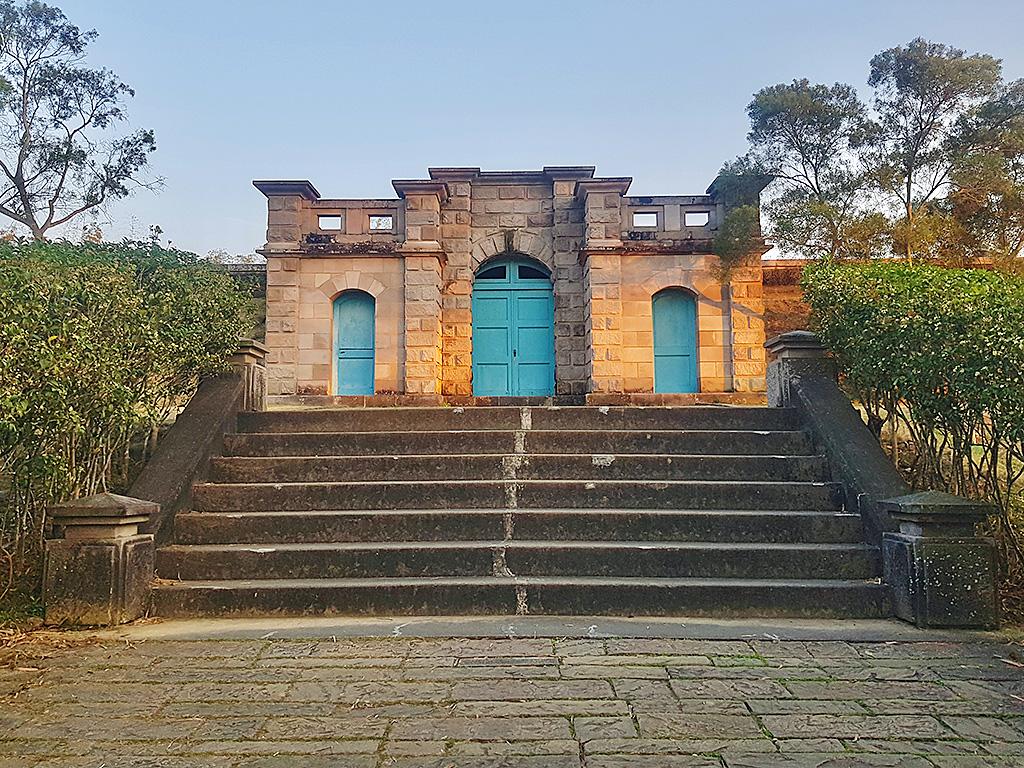
Photo: Tyler Cottenie
The pump building is a two-story red-brick building featuring large concrete buttresses on the exterior, and an original century-old overhead crane on the inside. It originally housed a coal-fired generator, but this, and the accompanying chimney, were removed long ago. Nowadays, there are shops selling souvenirs, food and drinks in and around the pump building, rounding out the set of amenities available to tourists. The original purpose of the pump building was to send the treated water two kilometers to the south to a cistern at the top of a hill.
For those willing to make the short drive over, the site housing this cistern has also been restored and is open to the public, free of charge. A long climb up a set of concrete stairs brings visitors to the stone wall surrounding the hilltop cistern, which itself is topped with ventilation shafts jutting out in regular rows. Purified water from the waterworks entered this cistern before finally flowing downhill and on toward Tainan households under the force of gravity.
The waterworks were expanded to meet increasing demand in 1952 with the addition of a rapid filtration pool in a newer building, also preserved on the current museum grounds. The waterworks remained in operation until 1982, when they were finally retired after 60 years of service to the citizens of Tainan. In 2011, a restoration project was approved and the museum itself opened on October 10, 2019. It has since become a destination of choice not only for those interested in Taiwanese history or engineering projects, but also for family outings, or for anyone looking to spend their leisure time in a pleasant outdoor setting.
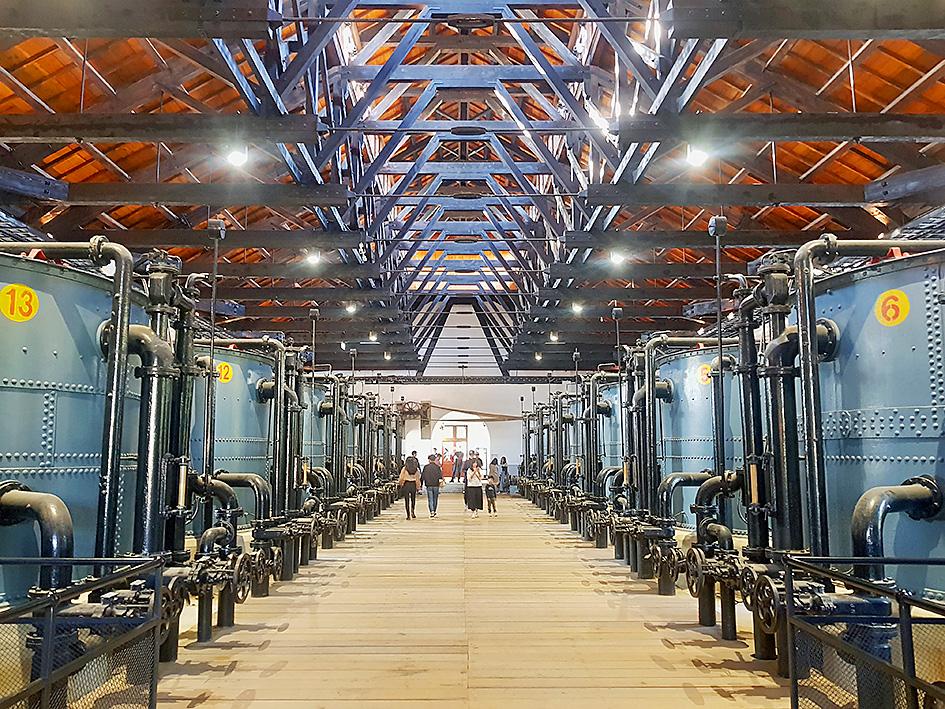
Photo: Tyler Cottenie
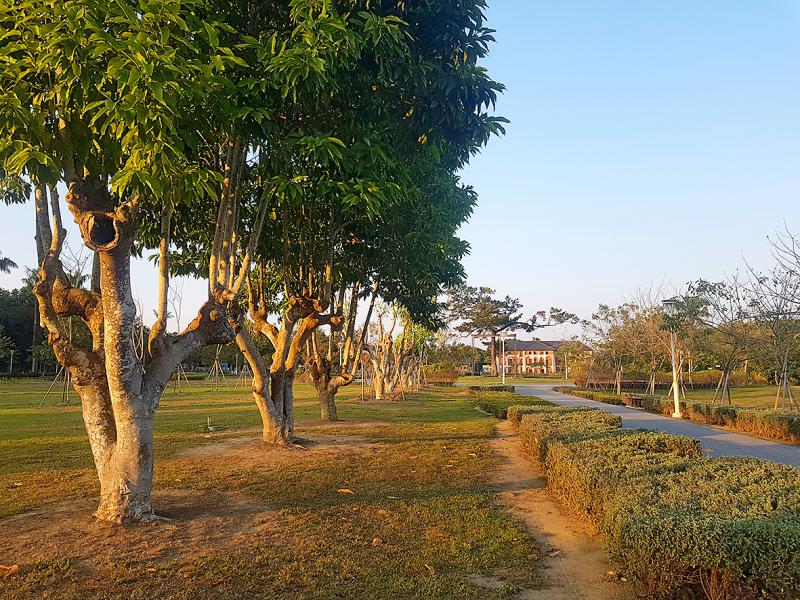
Photo: Tyler Cottenie
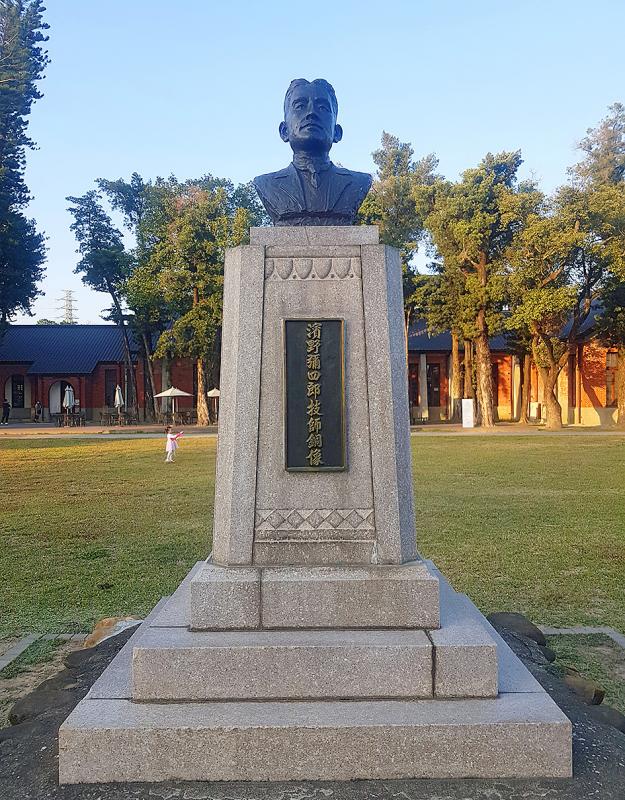
Photo: Tyler Cottenie

Seven hundred job applications. One interview. Marco Mascaro arrived in Taiwan last year with a PhD in engineering physics and years of experience at a European research center. He thought his Gold Card would guarantee him a foothold in Taiwan’s job market. “It’s marketed as if Taiwan really needs you,” the 33-year-old Italian says. “The reality is that companies here don’t really need us.” The Employment Gold Card was designed to fix Taiwan’s labor shortage by offering foreign professionals a combined resident visa and open work permit valid for three years. But for many, like Mascaro, the welcome mat ends at the door. A

Last week gave us the droll little comedy of People’s Republic of China’s (PRC) consul general in Osaka posting a threat on X in response to Japanese Prime Minister Sanae Takaichi saying to the Diet that a Chinese attack on Taiwan may be an “existential threat” to Japan. That would allow Japanese Self Defence Forces to respond militarily. The PRC representative then said that if a “filthy neck sticks itself in uninvited, we will cut it off without a moment’s hesitation. Are you prepared for that?” This was widely, and probably deliberately, construed as a threat to behead Takaichi, though it

If China attacks, will Taiwanese be willing to fight? Analysts of certain types obsess over questions like this, especially military analysts and those with an ax to grind as to whether Taiwan is worth defending, or should be cut loose to appease Beijing. Fellow columnist Michael Turton in “Notes from Central Taiwan: Willing to fight for the homeland” (Nov. 6, page 12) provides a superb analysis of this topic, how it is used and manipulated to political ends and what the underlying data shows. The problem is that most analysis is centered around polling data, which as Turton observes, “many of these

Since Cheng Li-wun (鄭麗文) was elected Chinese Nationalist Party (KMT) chair on Oct. 18, she has become a polarizing figure. Her supporters see her as a firebrand critic of the ruling Democratic Progressive Party (DPP), while others, including some in her own party, have charged that she is Chinese President Xi Jinping’s (習近平) preferred candidate and that her election was possibly supported by the Chinese Communist Party’s (CPP) unit for political warfare and international influence, the “united front.” Indeed, Xi quickly congratulated Cheng upon her election. The 55-year-old former lawmaker and ex-talk show host, who was sworn in on Nov.